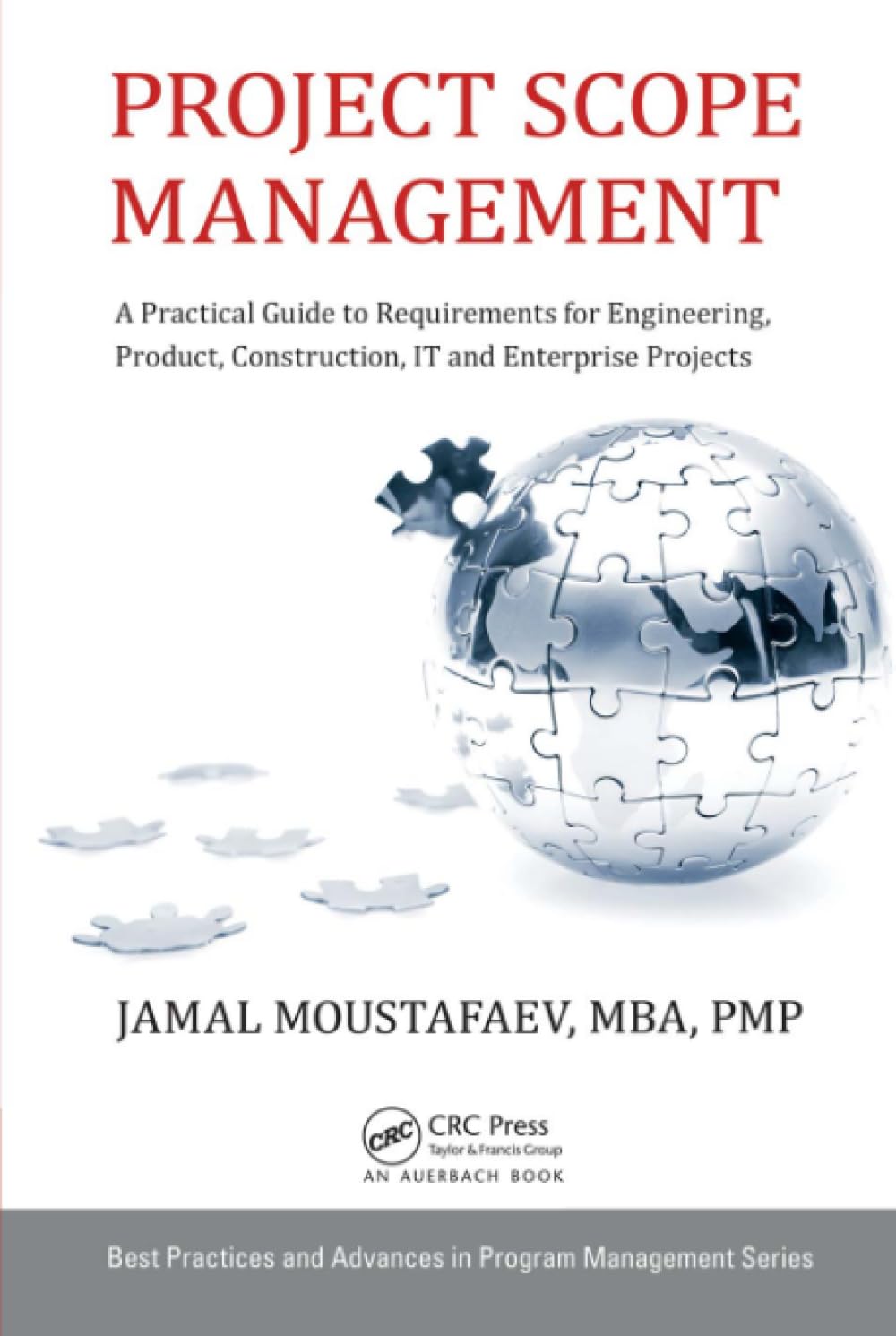
Project Scope
Project Scope: Defining the Boundaries of Project Success
What is Project Scope?
Project scope refers to the detailed outline of all aspects of a project, including its goals, deliverables, tasks, costs, and deadlines. It serves as a foundational element in project management, ensuring that all stakeholders clearly understand what the project entails and what it aims to achieve. By clearly defining the project scope, teams can effectively manage expectations, allocate resources appropriately, and minimize the risk of scope creep.
Key Takeaways
- Clarity and Alignment: A well-defined project scope ensures all team members and stakeholders understand the project’s objectives and deliverables.
- Resource Management: Clearly outlining the scope helps in efficient allocation and utilization of resources, including time, budget, and personnel.
- Risk Mitigation: Defining the scope upfront allows for identifying potential risks and developing strategies to address them.
- Performance Measurement: The project scope provides a baseline to measure project performance and progress.
- Change Control: A detailed scope facilitates effective change management, ensuring that any alterations are evaluated and approved systematically.
Understanding Project Scope
How It Works
Defining the project scope involves several key steps:
- Requirement Gathering: Engage with stakeholders to understand their needs and expectations.
- Objective Setting: Clearly articulate what the project aims to achieve.
- Deliverable Identification: List all the tangible and intangible outputs the project will produce.
- Task Breakdown: Decompose the project into manageable tasks and activities.
- Timeline and Budget Estimation: Estimate the timeframes and financial resources required.
- Scope Statement Documentation: Compile all the above information into a formal document that will serve as a reference throughout the project lifecycle.
Note
- Stakeholder Engagement: Continuous communication with stakeholders is vital to ensure the project scope remains aligned with their expectations.
- Flexibility: While the scope should be well-defined, it should also allow adjustments as the project evolves.
- Documentation: Thoroughly document all aspects of the scope to provide clarity and serve as a reference point.
- Approval Processes: Establish clear procedures for approving any changes to the project scope.
Related Terms
- Scope Statement: A detailed document that outlines the project’s objectives, deliverables, boundaries, and constraints.
- Work Breakdown Structure (WBS): A hierarchical decomposition of the total scope of work to accomplish the project objectives and create the deliverables.
- Scope Creep: The uncontrolled expansion of project scope without time, cost, and resource adjustments.
- Project Charter: A formal document that authorizes the project and gives the project manager the authority to apply organizational resources.
- Change Management Plan: A plan that outlines how changes to the project scope will be managed and controlled.
- Requirements Management Plan: A plan that describes how project requirements will be analyzed, documented, and managed.
Examples of Project Scope in Different Industries
Construction Industry
The scope of a commercial building project includes constructing a 10-story office building with specific features such as underground parking, energy-efficient systems, and compliance with local building codes. The scope outlines the tasks from site preparation to final inspections and sets boundaries by excluding landscaping and interior design, which the team will handle separately.
Information Technology Industry
The project scope for developing a new customer relationship management (CRM) system encompasses the software’s design, development, testing, and deployment. It specifies functionalities like contact management, sales tracking, and reporting tools. The scope excludes data migration from legacy systems; the team plans this as a separate project.
Healthcare Industry
The project scope for implementing an electronic health record (EHR) system in a hospital includes selecting the EHR software, customizing it to fit hospital workflows, staff training, and system deployment. The statement excludes integration with external laboratories and pharmacies from the current project phase.
Use Cases of Project Scope Worldwide
North America (Transportation System)
A municipal government in the U.S. initiates a project to upgrade its public transportation system. The project scope defines the objectives as modernizing bus fleets, implementing real-time tracking, and enhancing passenger information systems. It outlines the tasks, timelines, and budgets, ensuring all stakeholders are aligned. The scope excludes infrastructure changes like road expansions managed under a different project.
Europe (Renewable Energy)
A renewable energy company in Germany is embarking on a project to construct a wind farm. The project scope details the number of turbines, capacity targets, site preparation, and grid connection. It sets clear boundaries by excluding community engagement initiatives and long-term maintenance plans, which are addressed separately. This clarity helps secure approvals and manage stakeholder expectations.
Asia (Mobile Banking)
A software firm in India undertakes a project to develop a mobile banking application. The project scope includes user interface design, core banking functionalities, security features, and compliance with regulatory standards. It excludes customer support setup and marketing campaigns, which other departments handle. The defined scope aids in resource allocation and timeline adherence.
Best Practices for Managing Project Scope
Neglecting to define and manage project scope properly can lead to several issues:
- Scope Creep: Projects may experience uncontrolled changes without clear boundaries, leading to delays and budget overruns.
- Resource Misallocation: Ambiguity in scope can result in inefficient use of resources, affecting project quality and timelines.
- Stakeholder Discontent: Unclear scope may lead to unmet expectations, causing dissatisfaction.
- Project Failure: Inadequate scope definition can compromise the project’s success, leading to failure in meeting objectives.
Adhering to best practices in scope management ensures that projects are completed on time, within budget, and to stakeholders’ satisfaction. It involves clear documentation, stakeholder engagement, and robust change control mechanisms.
Project Scope: Common Mistakes and Issues
A common mistake in project management is the failure to involve all relevant stakeholders during the scope definition phase. For instance, neglecting to consult end-users in a software development project can result in a product that doesn’t meet user needs, leading to costly revisions and delays.
Another issue is inadequate scope documentation, which can cause confusion and misalignment among team members. For example, in a construction project, if the scope doesn’t specify the quality standards for materials, it may lead to disputes and rework.
Additionally, a lack of a formal change control process can result in scope creep, where new features or tasks are added without proper evaluation, impacting the project’s timeline and budget.
Project Scope: Frequently Asked Questions (FAQs)
What is the difference between project scope and product scope?
Project scope refers to the work required to deliver a product, service, or result with specified features and functions. Product scope, however, focuses on the features and functions that characterize a product.
Why is defining project scope important?
Defining project scope is crucial as it sets clear expectations, guides project planning, helps in resource allocation, and serves as a baseline for measuring project success.
How can we prevent scope creep?
We can prevent scope creep by thoroughly defining the project scope, involving all stakeholders, documenting requirements, and implementing a formal change control process.
What does a project scope statement include?
A project scope statement typically includes the project’s objectives, deliverables, boundaries, constraints, assumptions, and acceptance criteria.
Who is responsible for defining the project scope?
The project manager is primarily responsible for defining the project scope, often in collaboration with stakeholders and the project team.
Additional Resources
Preparing for a PMI certification?
- Exam Prep Courses: PMP®, CAPM®, and PMI-ACP®
- Exam Simulators: PMP®, CAPM®, PMI-ACP®, PMI-PBA®, PMI-RMP®, PMI-SP®, PgMP®, and PfMP®
- Professional Development Units (PDUs): 15, 30, and 60 PDU Bundles




